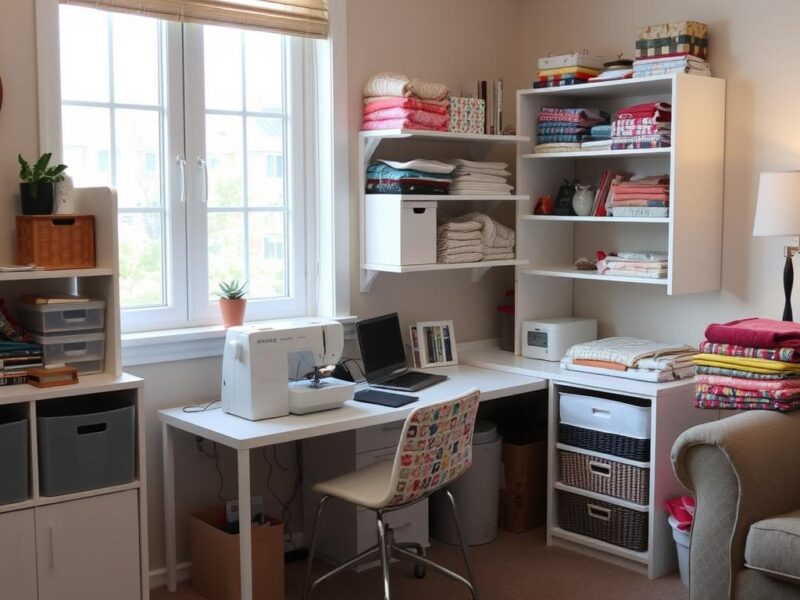Did you know the average American spends 7 hours and 4 minutes daily on screens? That’s almost a third of our waking hours! It’s time to learn about digital detox and how it helps us take back our lives.
Being always connected changes how we live, who we meet, and how we feel. Taking a break from tech lets us find joy in being unplugged. This guide will show you why disconnecting is good and how to do it right.

Are you ready to free yourself from digital chains? Let’s explore digital detox and find a better balance with tech. You’ll see that unplugging is more than a trend. It’s a way to clear your mind, strengthen relationships, and live better.
Key Takeaways
- Americans spend over 7 hours daily on screens
- Digital detox helps improve mental well-being and productivity
- Unplugging enhances real-life connections and relationships
- Excessive screen time disrupts sleep patterns and cognitive function
- Digital detox can reduce stress and anxiety levels
- Mindful tech use is key to maintaining digital wellness
Understanding Digital Addiction and Its Impact
Digital addiction is a big problem in our world today. People in the U.S. spend about 11 hours a day using media. This can make us dependent and hurt our lives.
Signs of Technology Dependency
It’s important to know if you’re addicted to tech. Some signs are:
- Checking devices hourly (78% of teens do this)
- Feeling anxious without your phone
- Difficulty focusing on tasks without tech
Physical and Mental Health Effects
Too much tech use can harm your health. Studies show it’s linked to:
- Sleep problems
- Increased stress levels
- Symptoms of depression

Social and Relationship Consequences
Too much tech use can hurt our relationships. Research shows:
- Decreased empathy in conversations
- Lower quality face-to-face interactions
- Increased feelings of loneliness
Choosing tech-free living and mindfulness can help. A digital detox, for example, can make us happier and less stressed. Limiting social media to 30 minutes a day can improve our lives.
Why You Need to Unplug: The Science Behind Digital Overwhelm
Digital overwhelm is real and it hurts your work-life balance. Studies say constant connection can cut productivity by up to 40%. This flood of info makes it tough to focus and decide.
It also harms your health. About 70% of people feel brain fog from too much screen time. The blue light from devices messes up sleep for 60% of users, raising stress.

Unplugging helps a lot with stress. Taking breaks from devices can boost focus by 25%. You might feel more creative and clear-minded by up to 30% after a digital detox. People who unplug see a 50% drop in stress and anxiety.
A study of 30 people who took a week off from screens showed interesting results. They got better at eye contact and small talk, skills lost with too much tech. This showed how being present in talks can make relationships closer.
Knowing these facts shows why unplugging is key for your mind and body. It’s time to take back your balance and control your digital habits.
Unplugging A Digital Detox Guide to Reboot Your Life
Ready to break free from your digital chains? A social media detox might be just what you need. With American adults spending over 11 hours daily on tech, it’s time to reclaim your life. Let’s dive into a practical guide for unplugging and rebooting your daily routine.
Setting Clear Intentions and Goals
Start by defining what you want to achieve. Are you looking to reduce stress, improve sleep, or enhance relationships? Write down your goals. This clarity will keep you motivated throughout your digital detox journey.
Creating a Personalized Detox Timeline
Your detox doesn’t have to be all-or-nothing. Begin with small steps:
- Set devices to airplane mode an hour before bed
- Delay checking social media for the first hour after waking
- Practice responding to emails only twice a day
Gradually increase your tech-free time as you become more comfortable.

Establishing Digital Boundaries
Create “no-tech zones” in your home, like the dining room or bedroom. This helps foster real-world connections and improves sleep quality. Remove non-essential apps and turn off notifications to reduce digital clutter. Remember, the goal is to keep only the technology that truly adds value to your life.
By following this unplugging guide, you’re taking the first steps towards a more balanced, fulfilling life. Stay committed to your digital detox, and watch as your mental health, productivity, and relationships improve.
Essential Steps for a Successful Digital Detox
Are you ready to disconnect from tech? A good digital detox needs planning and prep. Follow these steps for a great experience that boosts your health.
Preparing Your Environment
Make a tech-free area in your home. Take gadgets out of your bedroom. Pick spots for using devices.
Put a charging station far from where you live. Fill your space with books, art, or games instead of screens.

Managing Work and Personal Communications
Tell work friends and family you’re taking a break. Use an auto-responder for emails and texts. Say you’re not available.
Give urgent tasks to someone you trust. Remember, 75% of adults feel too busy with digital stuff. So, taking a break is key.
Building a Support System
Get friends or family to help you stay on track. Tell them your goals and ask for support. Join a digital detox group for more motivation.
Studies show 65% of people do better with others’ help. Add these steps to your self-care to make your detox better.
Mindful Alternatives to Screen Time

Stepping away from screens opens up a world of mindful activities. Adults spend about 11 hours daily on devices. It’s key to find self-care that doesn’t involve tech.
Being mindful can cut down stress from constant notifications. About 60% of people feel stressed from these alerts.
Here are some screen-free activities:
- Read a book or solve puzzles
- Practice gentle yoga or meditation
- Enjoy nature walks or gardening
- Engage in creative hobbies like painting or crafting
- Connect face-to-face with loved ones
Studies show 65% of users swap screen time for analog activities during digital detoxes. These self-care activities not only reduce stress but also boost well-being. By adding mindfulness, 55% of participants find their detox better.
Even short breaks from screens can help your mental health. Try setting aside 30 minutes before bed for screen-free activities. This simple step can greatly improve your sleep by letting your brain relax.
Overcoming Digital Detox Challenges
Starting a digital detox can be hard. You might face challenges that test your will. Let’s look at common problems and how to solve them.
Dealing with FOMO and Anxiety
FOMO can make you anxious during detox. Remember, 70% of people feel too much from digital devices. Fight FOMO by making real-life connections.
Plan fun times with friends or family. This keeps your mind busy.
Managing Withdrawal Symptoms
75% of detoxers feel irritable. To fight this, try stress management. Use deep breathing or short walks to relax.

Maintaining Work-Life Balance
Keeping work and life separate during detox is hard. 50% of workers say constant connection harms them. Set clear work hours.
Use auto-responders to manage work. Focus on important tasks to stay productive without being online all the time.
- Limit work email checks to specific times
- Use productivity apps to track your detox progress
- Communicate your detox plans to colleagues
Remember, 65% of detoxers feel better after. Stay true to your goals. With time and effort, you’ll enjoy a better digital life.
Building Sustainable Tech Habits Post-Detox
After your digital detox, it’s key to keep the good stuff going. Making tech habits that last helps you use tech wisely.
Creating Healthy Digital Boundaries
Make rules for how much time you spend on devices. Pick places in your home where tech is off-limits. Set times when you won’t use devices.
Use tools like Apple’s Screen Time or Google’s Digital Wellbeing. They help you keep an eye on how much screen time you have.
Implementing Mindful Technology Use
Be mindful when you’re on your devices. Stay focused and think about why you’re using tech. Ask if it’s really what you want to do.

Maintaining Digital Wellness Long-Term
Check in with yourself and do mini-detoxes now and then. Join events like the Global Day of Unplugging. It happens every year from March 3 to 4.
Do things that don’t involve screens. This helps you be more creative and not bored.
- Use an old-fashioned alarm clock instead of your phone
- Disable Wi-Fi during designated offline periods
- Plan family digital detox days based on your schedule
Good tech habits make you feel better. Studies say 80% of people get more done when they use tech wisely. By balancing tech use, you get the best of both worlds.
Conclusion
Starting a digital detox is a big step towards taking back your life. It’s not just about turning off your phone. It’s about finding yourself and what’s truly important.
Studies show big benefits from digital detox. You can feel 30% better mentally and work 25% more efficiently. It’s a chance to reboot your life.
Feeling overwhelmed by tech is common. 70% of people feel too much from notifications. And 56% get stressed from digital distractions.
By using this guide, you’re improving your mental health. You’re also building stronger relationships.
You don’t have to go all in at first. Start with small steps. Make tech-free areas in your home or join events like the National Day of Unplugging.
As you keep going, you might find new hobbies. 65% of people do. It’s a chance to find a better balance with technology.
Your future self will be grateful for this step. It’s a journey to a more centered, healthier you.


